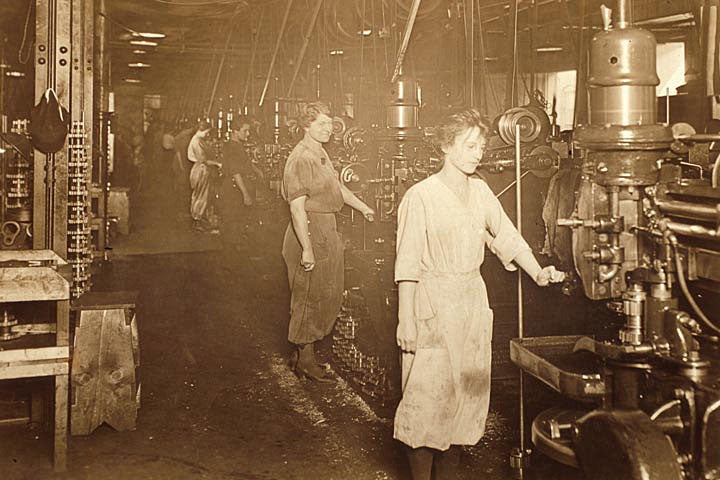This week marks the 100th anniversary of the United States’ entry into World War I. Fighting erupted in Europe in 1914, but President Woodrow Wilson maintained a policy of neutrality until the Germans resumed unrestricted submarine warfare in February of 1917. Congress formally approved U.S. entry April 6, 1917.
Though we tend to think of World War II as when women worked in factories, many women went to work in place of enlisted men during WWI, too, including those at Nash Motors in the image above. In fact, women already made a substantial part of the workforce even before the first world war, not to mention the farm women who had always worked in the fields.
What was different was the number of women from all classes and races who formed and joined relief and aid organizations. Women worked to bring aid to war-torn European countries even before the U.S. entered the war. These efforts expanded following the declaration.
Stay informed on the latest news
Sign up for WPR’s email newsletter.
Upper-class women were the primary members of voluntary organizations because they had the time and money to devote to the effort. Women in Dane County, for instance, created window displays to educate their neighbors about food conservation efforts, including meatless and wheatless days.
Middle- and lower-class women also participated in these groups, though most primarily worked as nurses or replacing men in their jobs on the home front. The increasing number of working women prompted the Wisconsin Federation of Women Wage Earners to advocate for women workers, calling, for example, for employment guidance for girls to improve working conditions and to ensure representation for women at legislative hearings on women’s welfare.
At the University of Wisconsin, home economics students produced a wartime recipe booklet using alternative ingredients, with recipes including scalloped cheese and steamed barley pudding. More than 2,000 copies sold the first day it was available with all profits going to the Red Cross.
Wisconsin Public Radio, © Copyright 2024, Board of Regents of the University of Wisconsin System and Wisconsin Educational Communications Board.


